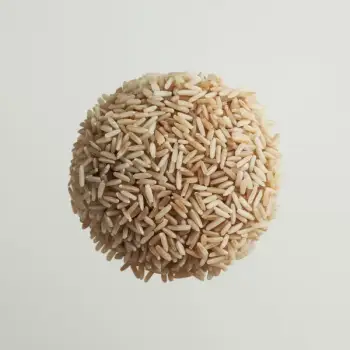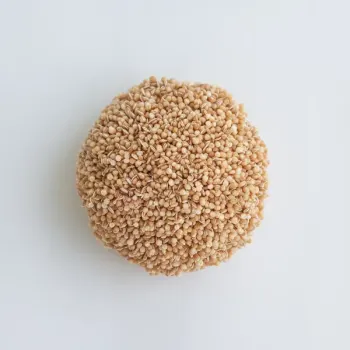Brown rice and quinoa are whole grains popular in cooking for their health benefits; brown rice has a chewy texture and nutty flavor, while quinoa is fluffy with a mild taste and cooks faster. Both can be used in various dishes like salads, soups, and rice dishes.

Brown rice is a whole grain with the outer hull removed, retaining its nutrient-rich bran and germ. It has a chewy texture and a nutty flavor, making it a popular choice for those seeking a healthy and filling staple.

Quinoa is a gluten-free seed that is cooked and eaten like a grain. It is prized for its complete protein profile and quick cooking time. Quinoa's slightly crunchy texture and mild, nutty taste have made it a modern-day superfood.
Brown rice has a chewier texture and more pronounced nutty flavor, while quinoa is fluffier and has a milder taste with a bit of earthiness.
Quinoa boasts a higher protein content and a complete amino acid profile, making it a preferred choice for vegetarians and vegans. Brown rice, while nutritious, has less protein and is not a complete protein source.
Brown rice is often used in traditional rice dishes and as a side, whereas quinoa can be used in a broader range of recipes, including salads, soups, and as a rice substitute.
Brown rice typically takes about 45 minutes to cook, whereas quinoa is ready in about 15-20 minutes.

Your ultimate Recipe Box, Meal Planner, and Cooking Class all in one
Best used in dishes like brown rice pilaf, stir-fries, or rice pudding. Expect a hearty texture that holds up well to longer cooking and provides a satisfying base for robust flavors. Ideal for cold rice salads, quinoa bowls, or as a substitute in sushi. Quinoa's lighter texture complements delicate flavors and makes for a nutritious alternative to white rice.
Brown rice adds a chewy, substantial element to salads. It's excellent for grain-based salads that can serve as a meal on their own. Quinoa is perfect for light, refreshing salads. Its small size and fluffy texture mix well with vegetables and dressings, absorbing flavors beautifully.
In soups, brown rice provides a satisfying chewiness and helps thicken the broth over time, making it ideal for hearty stews and slow-cooked soups. Quinoa is a fantastic thickener for soups and cooks quickly, which is great for adding protein and texture without much waiting.
Substituting one for the other can be done based on personal preference and dietary needs. However, expect a change in texture and cooking times. Quinoa, with its complete protein, is an excellent substitute for vegetarians in dishes that traditionally use brown rice.
Both brown rice and quinoa are nutritious whole grains that offer a variety of health benefits.
| Nutrient | Quinoa ( per 100g cooked ) | Brown Rice ( per 100g cooked ) |
|---|---|---|
| Fat | 1.9g | 1.0g |
| Iron | 1.5mg | 0.4mg |
| Fiber | 2.8g | 1.8g |
| Calcium | 17mg | 2mg |
| Protein | 4.1g | 2.5g |
| Calories | 120 | 123 |
| Carbohydrates | 21.3g | 25.6g |
Quinoa is often considered healthier due to its higher protein content and complete amino acid profile, but both are nutritious options.
Yes, they can be cooked together, but keep in mind that quinoa cooks faster than brown rice, so adjust cooking times accordingly.
Yes, brown rice can replace quinoa in salads, providing a different texture and slightly nuttier flavor.
Quinoa generally has a higher fiber content compared to brown rice, which can aid in digestion and provide a feeling of fullness.
Yes, both brown rice and quinoa are naturally gluten-free, making them suitable for those with gluten sensitivities or celiac disease.